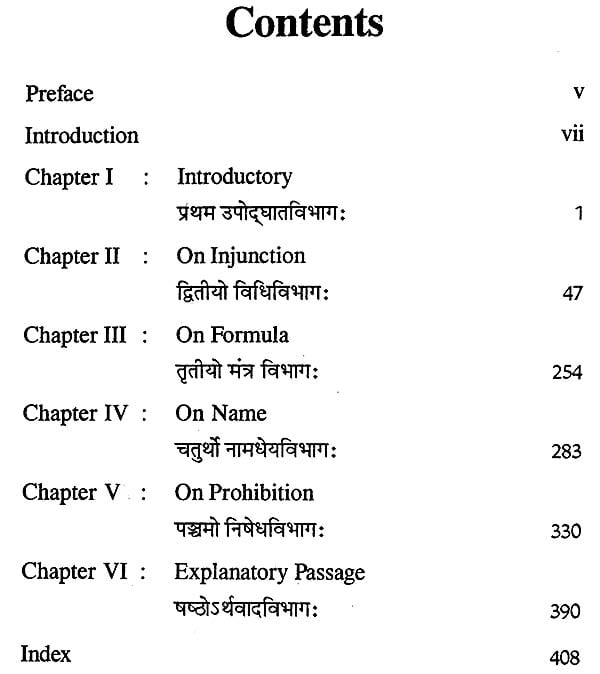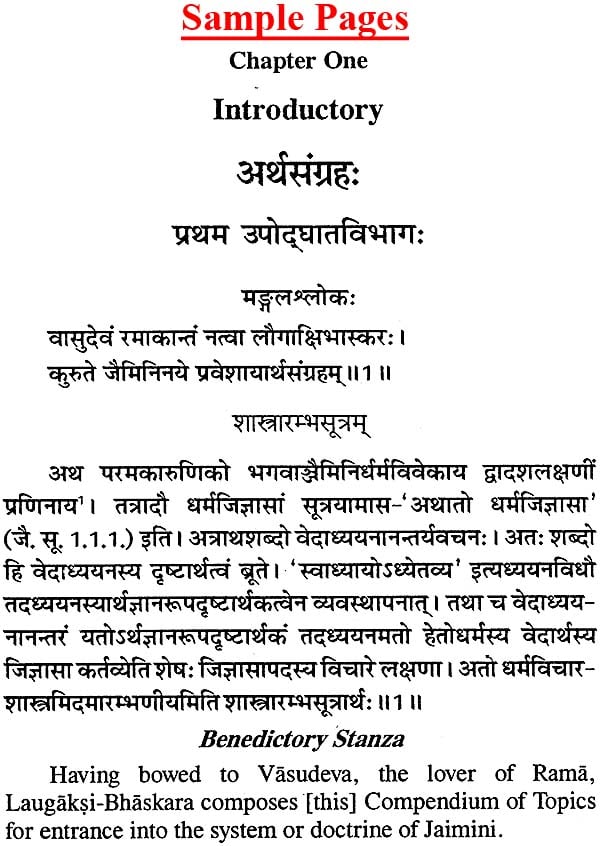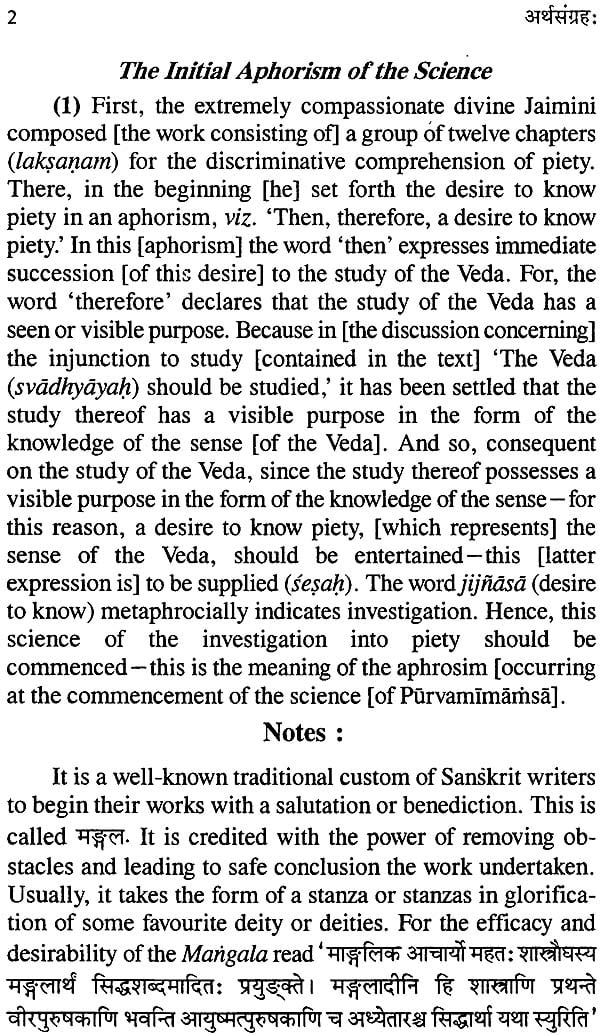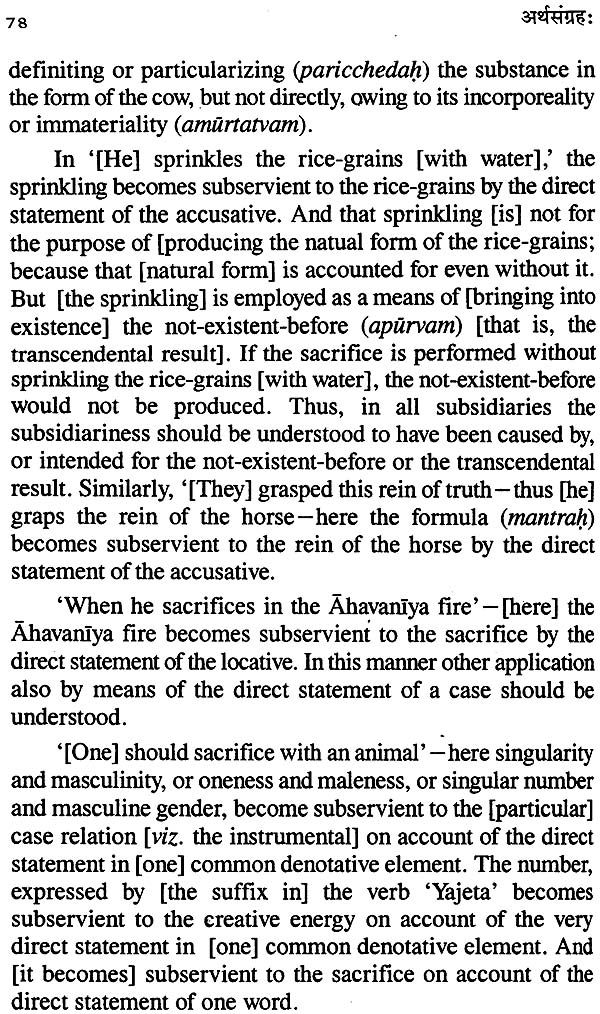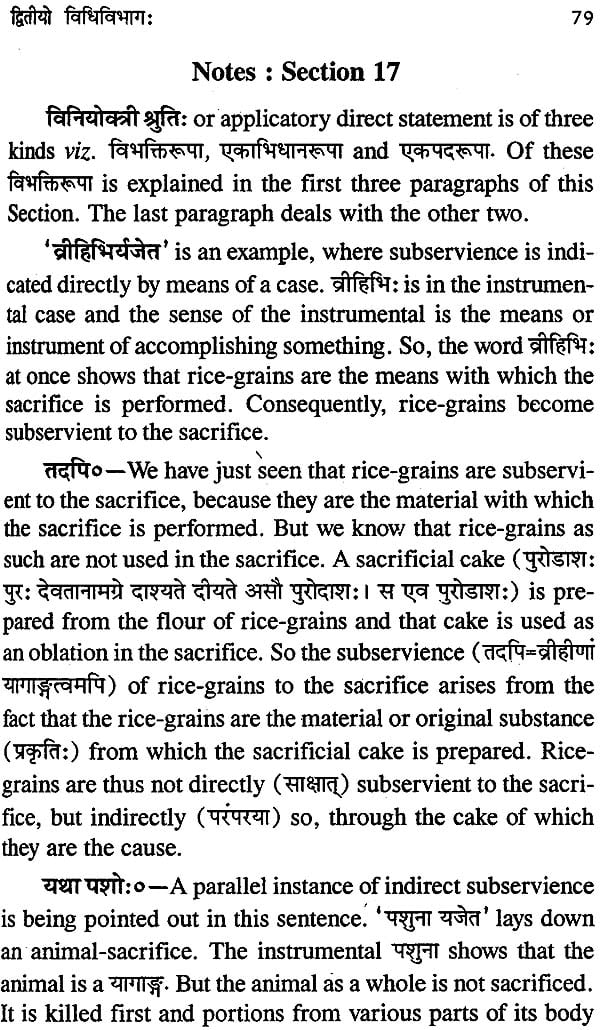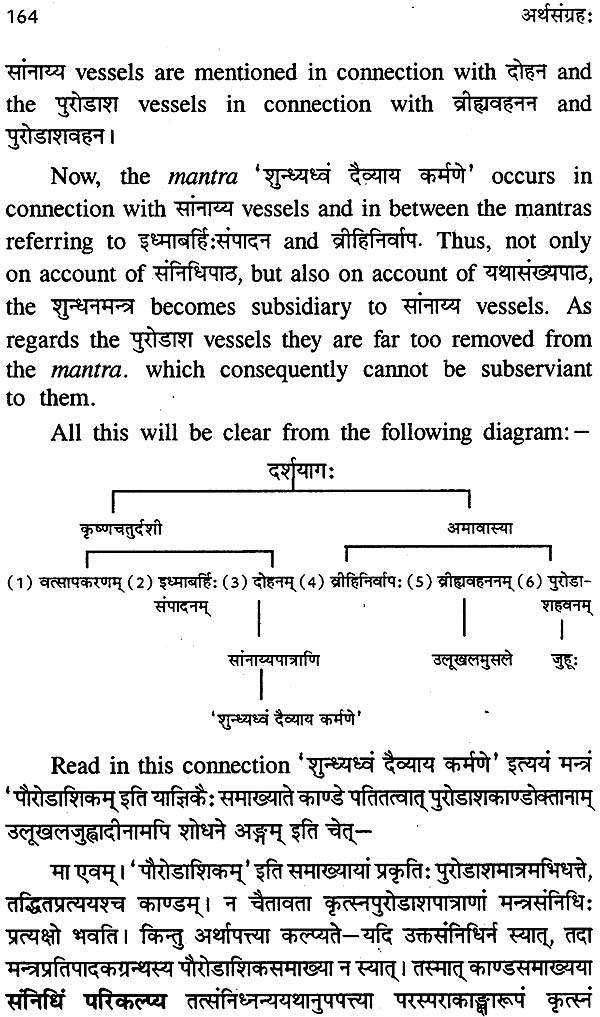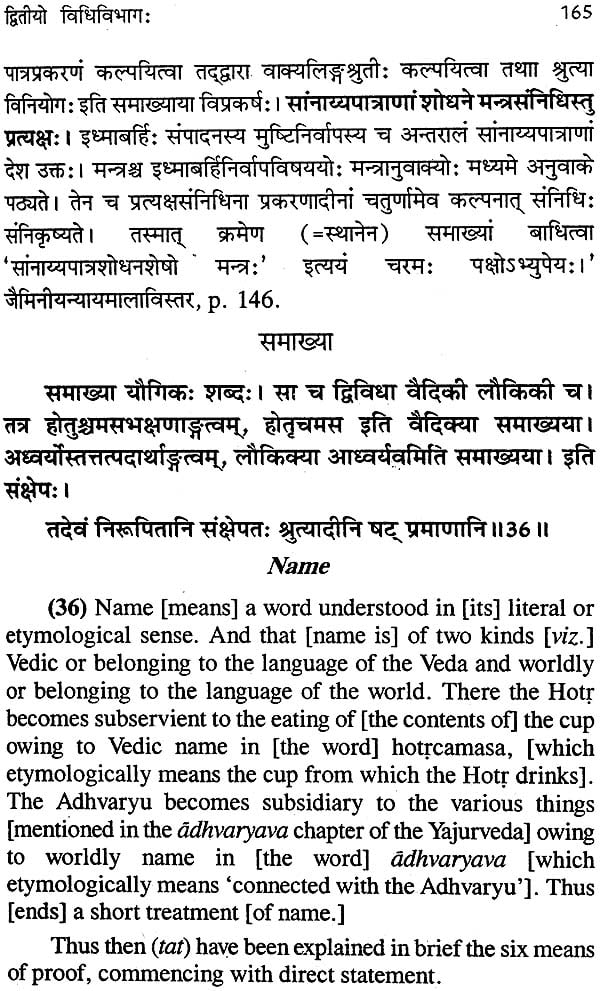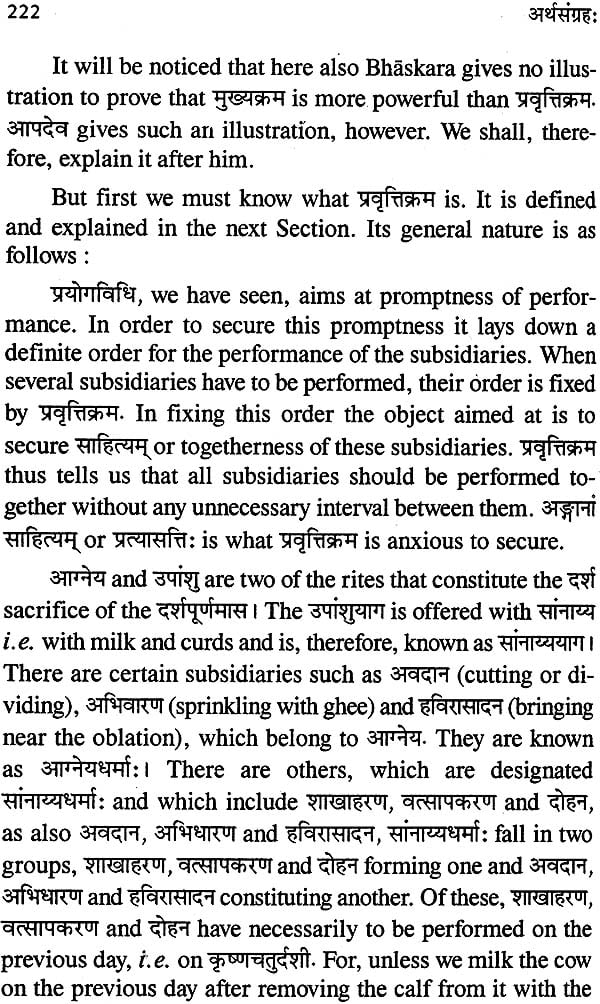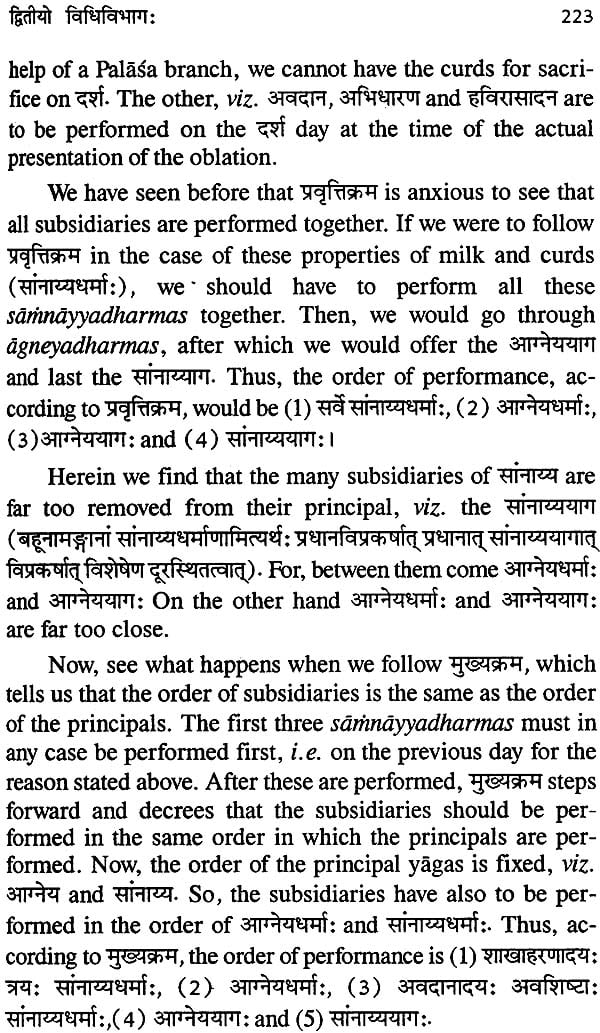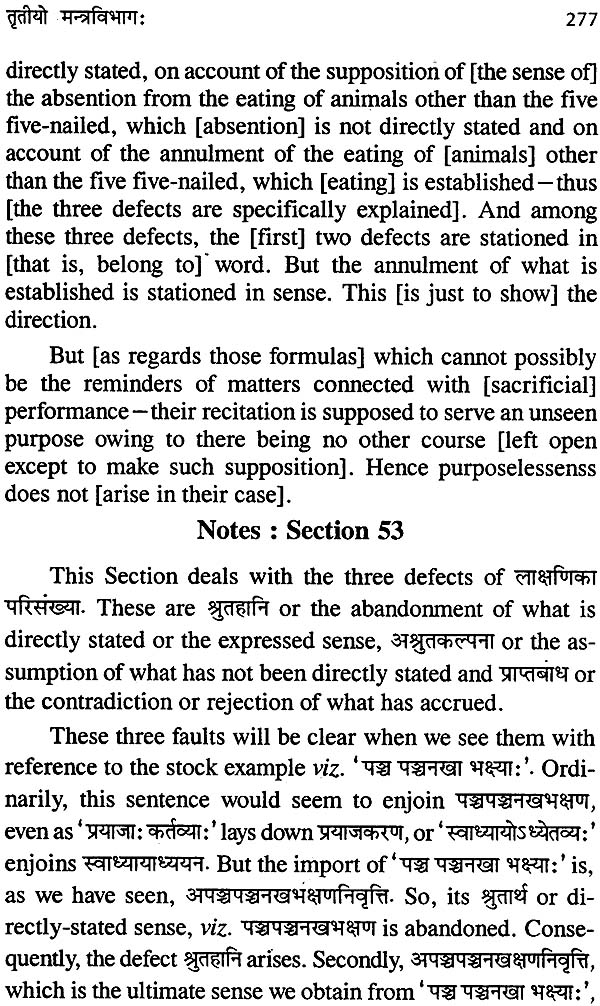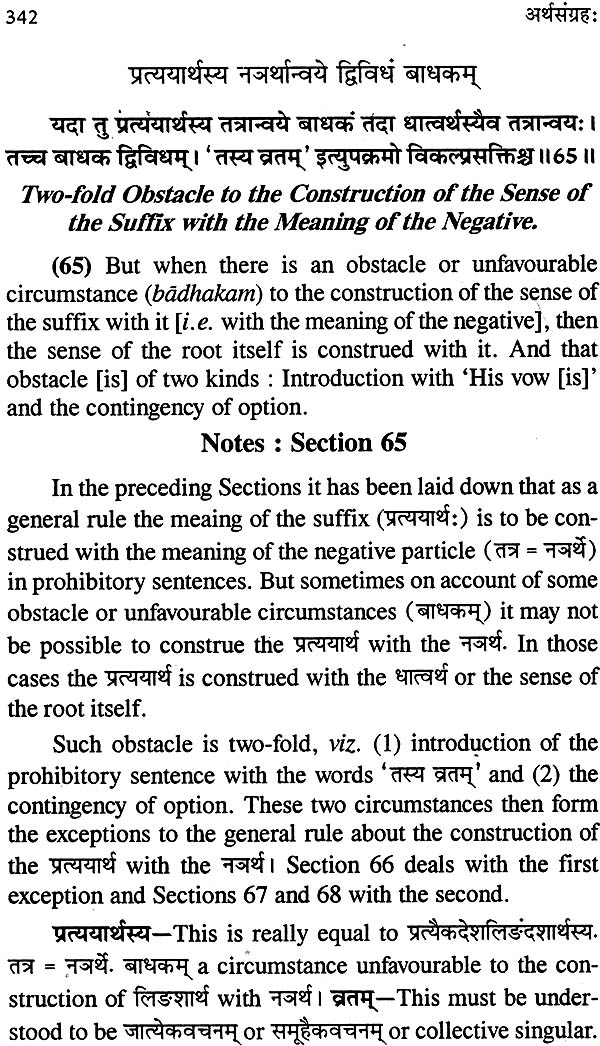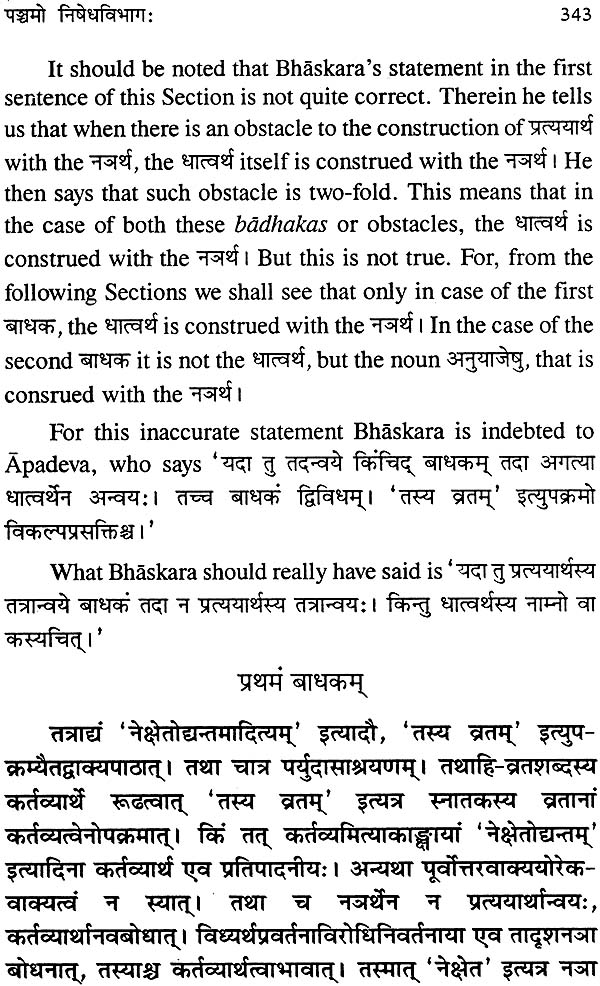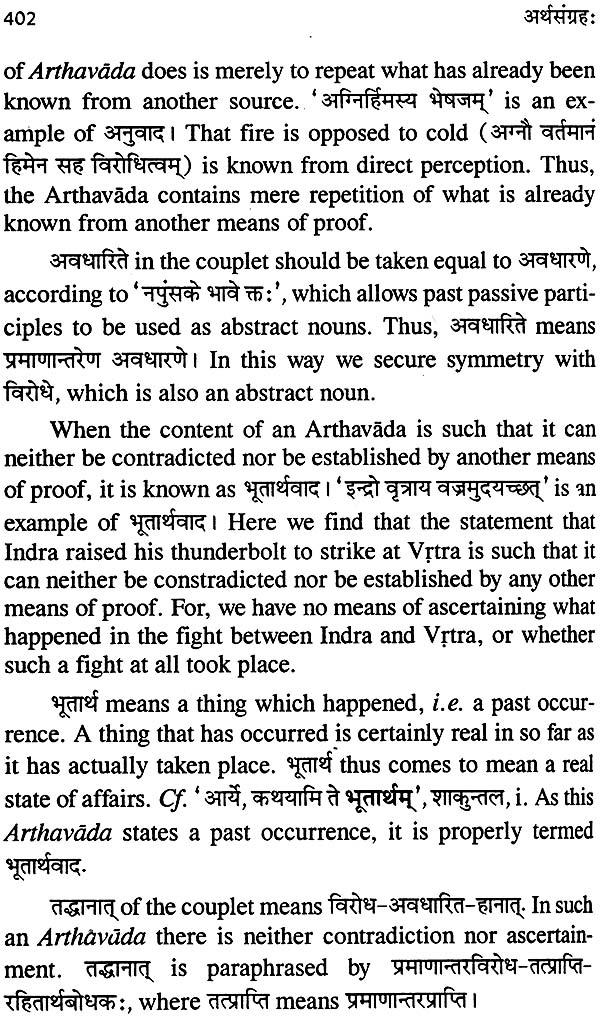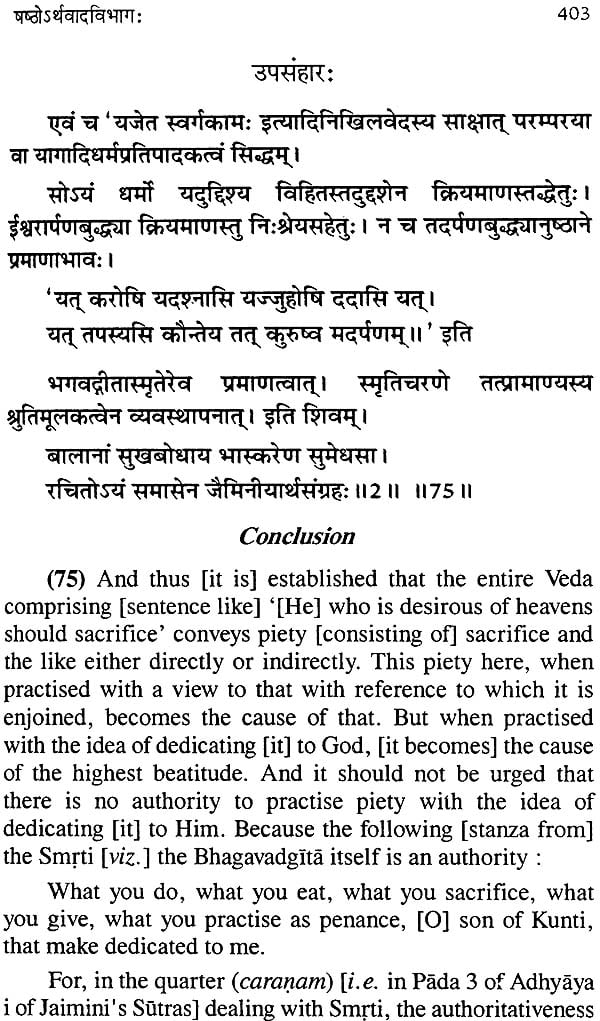
Arthasamgrahah of Laugasksi Bhaskara
Book Specification
| Item Code: | NAN717 |
| Author: | A. B. Gajendragadher and R. D. Karmarkar |
| Publisher: | Bharatiya Kala Prakashan |
| Language: | Sanskrit Text with English Translation |
| Edition: | 2017 |
| ISBN: | 9788180903892 |
| Pages: | 423 |
| Cover: | Hard Cover |
| Other Details | 8.5 inch X 5.5 inch |
| Weight | 520 gm |
Book Description
The Artha Samgrahah is an elementary treatise on Mimamsa Darsana, written Laugaksi Bhaskara. This text simplifies the subject matter of Mimamsa and presents it in a clear way for the followers of Mimamsa-sastra, According to Dr. Umesh Mishra : "It is an elementary book which is very useful for the beginners. Due to its easy and simple style the book has become so very popular amongest the Sanskritists." There are a few commentaries on Artha Sangraha, available today. Among them Artha Sangraha Kaumudi of Paramahamsa-ramesvara-Bhikshu is a very popular and oldest commentary. In the Mangalacarana verse the commentator has clarified that for the easy and clear understanding of the students of Mimamsa I am writing the commentary:
Srijaimininaye granthapravesaya nirupitah I Vidusa tatra balanam kaumudlyam vitanyate "
The real intension of the commentator is to present the simple and main subject matter of Mimamsa Philosophy. Through this famous commentary the general readers of Mimamsa would understand properly the text of Mimamsa. However, it clear from the above verse that the commentator written the commentary even for the common students of Mimamsa. This Kaumudi commentary was first published from Varanasi in 1900 A.D. However, a number of editions of Artha Samgraha have been published from different cities of India.
From the above: mangala verse it is clear that . Laugaksi Bhaskara is the author of this work. This verse also indicates that Bhaskara was a devotee of Lord Visnu or Vasudeva. Lord Vasudeva is the special designation, by which the Supreme Lord" is referred to among the Pancaratras, Bhaskara, therefore, may have been a follower the Pancaratra School of the Vaisnavas. There is another reason why salutation to Visnu at the beginning of a work on Mimamsa Philosophy is appropriate. In sacrificial literature Visnu is regarded as the highest, God as said : "Agnirvai devanamavamo Vishnu paramah" He is in fact the sacrifice itself, i.e., Visnurvai yajna. Therefore, salutation to him at the commencement of a science dealing mainly with sacrificial literature is quite proper. In the above verse the world 'jaiminiaye' indicates that it is the doctrine or system of Jaimini, viz., Purva-Mimamsa. Niyate purusah istapraptim prati iti nayah. By following Acharya Jaimini's doctrine a man can attain his desired object, viz. liberation or moksa or heaven. Regarding the title of the book-Artha Samgrahah it can be said as : Arthanam mimamsasastrapratipaditanam visayanam samgrahah atratam or arthanam samgrahah tam - Artha Samgraha, means the book, which treats of the topics (artha) that are dealt with in the Purva-Mimamsa.
As it is known that Acharya Jaimini is regarded as the founder of the science of Purva-Mimamsa. But as in his Sutras references to distinguished predecessors occur, it is concluded that he was not actually the founder, but the most eminent exponent of that science. Tradition traces the origin of this science to Brahma himself and regards Jaimini as the man, who reduced the doctrine, which was upto his time being transmitted orally, to writing and embodied it in a book. However, there is no doubt that Artha Samgraha deals with the main theme of the Mimamsa philosophy.
The book Artha Sangraha is divided into Six Chapters, viz. Upodghata, Yidhi, Mantra, Namadheya, Nisedha and Arthavada. The first chapter explains dharma, Veda and its related subjects. The Mimamsa Sutra of Jaimini starts with the sutra : 'Athato dharmajijnasa. Dharma is a term of widest significance in Sanskrit and is almost untranslatable by a single word. It applies to duties and obligation of all kinds, both religious and profane. In the Purva Munamsa it has a restricted sense and means sacrifices and other matters enjoined by the Vedas. However, the meaning of Veda, according to the Mimamsakas, is dharma or piety. The meaning of the sutra 'Athatodharma-jijnasa therefore means, an inquiry or investigation into the nature of piety is to be undertaken. Thus, the meaning of the first sutra comes to this : After the study of the Veda (atha) , as that study aims at understanding the meaning of the Veda, therefore (atah), as inquiry into piety, which is the sense of Veda, should be undertaken. It is to be noted that in order to make the sutra complete, we have to supply the word kartavya after dharma- jijnasa. Artha-jnana, which is the fruit of Vedadhyayana, is here declared to be drstartha or a seen or visible purpose. This is opposed to adrstartha or apurva or unseen fruit or the non-existent -before. The word dharma is defined hare as: 'Veda pratipadyah prayojanavadarthah.' There are really three words in the definition, viz., veda pratipadyah, prayojanavan and arthah, The sentence 'svargakamah yajeta' enjoins sacrifice with a view to attain heaven. This yaga is 'Vedapratiptidya', because it is laid down or propounded by the Veda. It is 'prayojanavan", because its purpose is svarga. And it is artha or desirable matter, because it leads to heaven, which is full of enjoyments. The definition of dharma being thus fully applicable to it, yaga is dharma.
Regarding the definition of the word Veda it is defined as: 'Apauruseyam vakyam vedah' is the definition of veda, according to Mimamsakas. Both the words in the definition are significant. The word apauruseya excludes from the province of the Veda such a work as the Mahabharata, which is known to the work of a human being, viz. Vedavyasa. The word vakya is also necessary. Otherwise, entities like the soul, which is apauruseya would be the Veda. Sayana in the Introduction to his Rgvedabhasya defines the Veda as: "mantrabrahmanatmakah sabdarasirvedah'. The Veda has five divisions, viz. Yidhi, mantra, namadhyeya, nisedha and arthavada. It should be noted that this five fold division of the Mimamsakas is practically the same as the two fold division of Sayana. For Brahmana, mentioned in the Sayana's definition, covers vidhi, namadheya, nisedha and arthavada.
